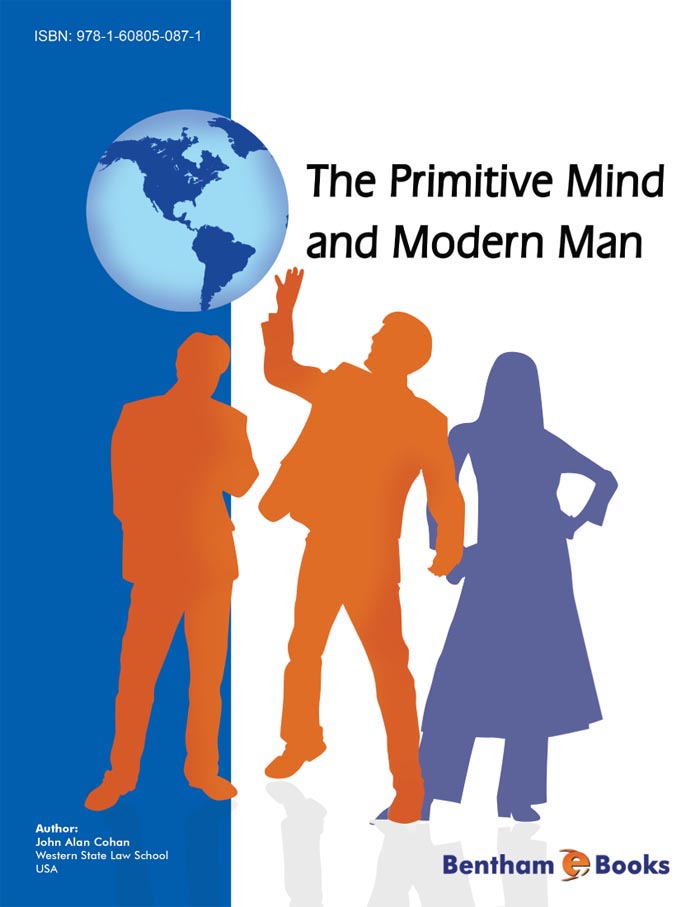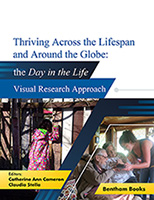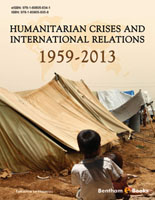Cultural anthropology is a relatively new discipline, having its origins in 19th century ethnology, which involves the organized comparison of human cultures. It was not until the 1920s that anthropologists started to actually live among primitive people for a considerable period of time, to participate in and observe the social and cultural life of the group. Up until then, an understanding of other people was important mainly to diplomats, military personnel, colonial officials, missionaries, and traders. In fact, once anthropology got going as a discipline, scholars gathered materials from these very groups. Anthropology became a recognized academic discipline in the 1890s. The first department of anthropology was established by the University of California in 1902, and the first course pertained to North American ethnology.
The use of the word "primitive" in the title of this book has no derogatory implications whatsoever. "Primitive" does not mean "inferior," but is derived from the Latin primitivus, meaning "Of or belonging to the first age, period, or stage." It connotes traits that are simple, fundamental, and of ancient origins, unadulterated by exposure to trends of the industrialized world. "Modern" is also a controversial term, but I use it to refer to industrialized cultures and, to some degree, a materialistic, mechanistic, unnatural, highly commercialized and dehumanized pattern of living.
The anthropologist is bound to consider to what extent, if any, the primitive mind differs from the modern mind or is somewhat similar. In this book we will explore the fundamental complexities of human cultures, often replete with rich organization, resilient traditions, clarity of roles and taboos, dynamic interdependence on the natural environment, and the idea that all beings exist in relation to one another.
A fundamental principle in anthropology is that cultures should be studied as a whole, and that customs and beliefs can be properly understood only in the context in which they operate. This does not arbitrarily carve out from human culture a segment such as the economy, political systems, law, personality structure, or social relations, but rather focuses on human societies as an interrelated whole.
Cultural anthropology seeks to describe and explain the variety of behaviors, customs and beliefs among people of the world, their forms of social organization, the manifold connections between various aspects of human life, and the shared ways of doing, thinking and making things.
As we will see throughout this book, characteristics that seem to be most rigorous and distinctive in these cultures are, in many ways, found in the same thought processes and motivations of people in developed cultures. Perhaps the greatest lesson driven home by modern anthropology is the remarkable adaptability of human beings as revealed through the enormous diversity of behavior that anthropologists have discovered among cultures of the world.
This book seeks to instill respect for the belief systems of other cultures. We might disagree with what other people regard as "science," and find their logic to be perplexing, but when we put aside our cultural prejudices and try to understand these beliefs and practices from the perspective of those who engage in them-we can gain new insights about our own practices.
Anthropology is of interest because human nature is of interest. Human nature is expressed in fundamentally similar patterns throughout the ages. We see, for instance in Old Testament literature, that human beings display a stream of emotions and tendencies then as they do now-envy, anger, treachery, warlike tendencies, greed, love, lust, hate, cooperation, courage, faith, doubt, generosity, and so on.
In the best of circumstances it is impossible to put together a completely representative book about cultural anthropology, given the ever-changing patterns of culture. Though there is a great deal of continuity and stability within cultures from generation to generation, there is no such thing as unchanging traditions. Cultures are subject to constant change by such factors as invention, outside contact, and adaptive drift from within. In an era of globalization and shrinking borders, even isolated pockets of civilization are subject to an adaptive drift. Thus, cultures are not viewed in a static social equilibrium, but are conceived as a dynamic phenomenon.
Anthropology not only explores phenomena such as magic, witchcraft, divination, ritual and ceremony, but a vast array of beliefs that often overlap with our own. Healing practices, for instance, are universal among cultures, and while modern Western medicine has made many strides toward curing disease, a majority of cultures today rely on shamans, witch-doctors and folk healers to diagnose and heal illness. Magic is relied upon in many cultures to produce rain, to overcome one's enemies, to insure victory in battle, to cause pregnancy, to find lost objects, to prevent or cure sickness, to assure an abundant supply of food, to ward off evil omens, and so on. There are parallel belief systems in modern cultures, as discussed in this book.
We will examine how people interact with others, trade, deal with conflicts, organize ceremonies, use rituals and symbols, adapt myths to suit current trends, and we will explore their practices concerning child rearing, the treatment of women, conflict and death, status and wealth, altered states of consciousness, the evil eye, magical powers, healing, witchcraft, hunting and gathering, how peoples cope with death, and other patterns of culture.
It has become more important than ever to respect and understand different points of view without being so certain that our own perspective is "right," while others are "wrong." The tendency towards ethnocentric attitudes is pervasive in the world. In principle, there is no reason why our own beliefs should be viewed as superior to those of other cultures. Cultural relativism goes hand in hand with a study of anthropology-for from the perspective of each group of people, what is "good" or "bad" may be uniquely different from the next one. At the same time, as brought out in this book, there are certain basic values recognized by all people, suggesting a fundamental uniformity in moral principles-however, they may be expressed differently from culture to culture. In this book we will discover that different values have common cores.
Today, the various cultures of the world are of interest to everyone, not only because the behavior of almost any society may have important ramifications in world affairs, but because we can now easily visit distant and formerly inaccessible places, we can develop friendships across the world (at least in cyberspace), and a great many people immigrate to live and work in cultures that have different customs and traditions than learned in their homeland.
I have tried to avoid writing a "technical" book so as to engage undergraduate college students studying the social sciences, as well as general readership ("armchair anthropologists"), because I think it is important to present a broad cultural dimension in an accessible format in an age where the world is growing smaller and smaller.
This book presents a systematic attempt to introduce, analyze and formulate precise concepts and clear definitions into the subject. This book is intended to make a contribution to our understanding of how various people carry on their lives and solve daily problems, and seeks to evoke the imagination of the reader to instill a genuine appreciation of cultural diversity.
Anthropology has so many aspects, its roots and branches penetrate so profusely into the fabric of society, that it is difficult to study anthropology in its entirety. Anthropology today is not just of academic interest. There are numerous fields that have opened up to anthropologists in recent years, with anthropologists working for municipal, state and federal governments. Anthropologists are hired to analyze government data, track population growth, determine the sources of gang warfare, understand traffic patterns, migration patterns, demographic information, and so on. Anthropologists are called upon as expert witnesses in various court proceedings to help the jury understand the motivations behind certain conduct. The military hires anthropologists to help analyze intelligence data and help understand customs of foreign cultures. Anthropologists are hired to help analyze differences between national cultures and regional, ethnic subcultures, and to help formulate organizational as well as international policy. Business anthropology is a growing field: Almost every large company has anthropologists on staff to conduct qualitative research on employee relations, to study work processes so as to help promote greater efficiency, to study consumer behavior, organizational change, sex differences in the workplace, and to help formulate ways to adjust business practices in foreign markets.
In short, the reader should find the information in this book accessible and helpful in understanding the social movements and concerns that so many cultures are confronted with in the midst of globalization.
John Alan Cohan
Western State Law School
USA





